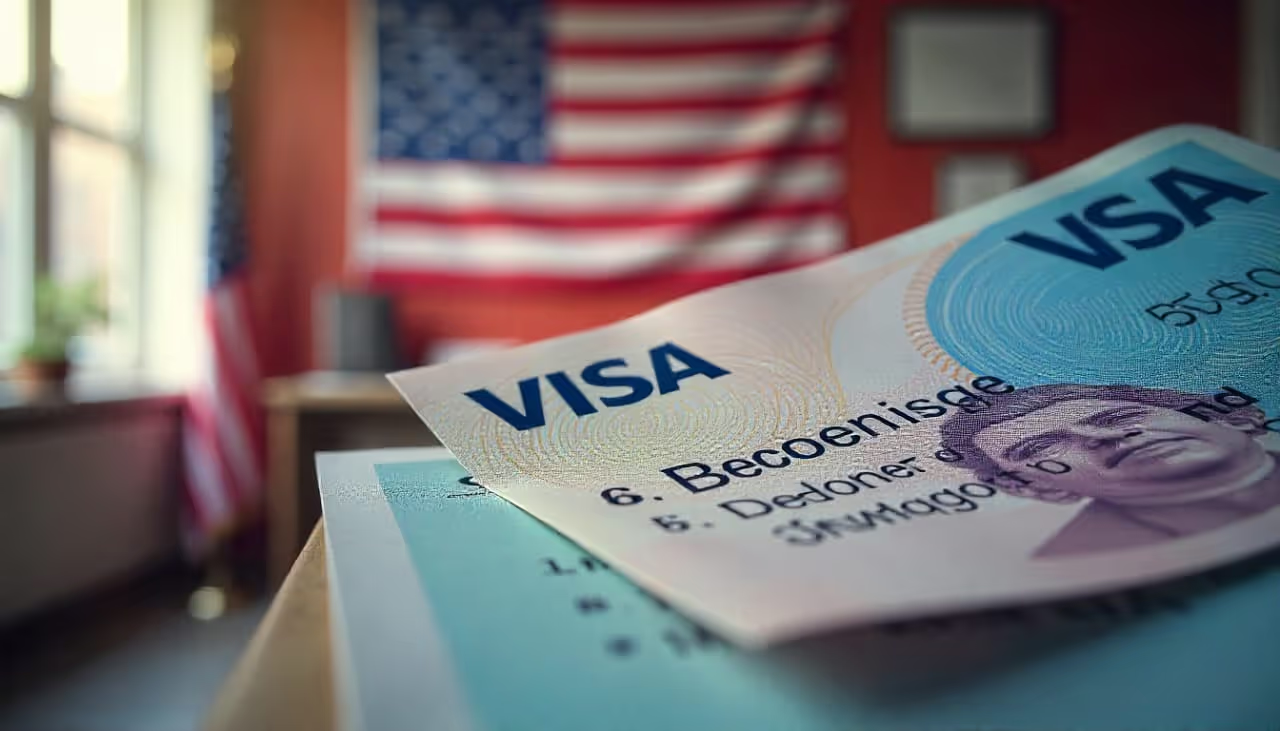.png)
.png)
Curious about the EB2 NIW timeline? Learn how long it takes to get an EB2 NIW green card in 2025, including I-140 and I-485 processing times, country-specific delays for India, Pakistan, and Bangladesh, and tips to avoid unnecessary delays.

If you are considering the EB2 NIW visa in 2025, one of the most common questions is how long the process will take. The answer depends on your country of birth, USCIS workload, and the visa bulletin status. Applicants from India often experience longer timelines because of EB2 priority date backlogs, while those from Pakistan and Bangladesh usually move through the process much faster.
Understanding the EB2 NIW timeline is essential because it allows you to plan your career decisions, travel, and even your family’s future with more clarity. Think of it as your roadmap to permanent residency in the United States. Let’s go step by step through the timeline and see what you can expect in 2025.
The EB2 NIW visa (Employment-Based, Second Preference, National Interest Waiver) is a self-petitioned pathway to a U.S. green card for individuals whose work significantly benefits the United States. Unlike other employment-based categories, you do not need an employer to sponsor you because the requirement for a job offer and labour certification is waived in the national interest.
The process usually has two main stages. The first step is filing Form I-140, which proves your eligibility and your work’s national importance. The second step is either Form I-485 Adjustment of Status (if you are in the U.S.) or Consular Processing (if you are abroad).
So how long does it all take? In general, the EB2 NIW green card timeline ranges from 12 to 24 months for most applicants without backlogs. However, if your priority date is not current—particularly if you are from India—the process can extend by several years. For a clear estimate, it’s helpful to track the visa bulletin and USCIS processing updates.
The EB2 NIW timeline can be broken down into a few key stages. First, there is the preparation of your case, which usually takes one to three months, depending on how quickly you can gather the necessary documents and recommendation letters.
Next comes I-140 processing, which in regular processing takes about six to nine months. If you choose premium processing, you can receive a decision within 45 calendar days. However, premium processing only speeds up the decision on your I-140; it does not shorten the overall wait for the green card.
After that, there is the priority date wait, which varies by country. For countries without backlogs, you can move directly to the next step. For India, however, there are significant delays due to retrogressed EB2 priority dates.
Finally, once your priority date is current, you can proceed with I-485 Adjustment of Status or consular processing, which typically takes six to twelve months.
To summarize this in a straightforward way: applicants from countries without backlogs may finish the process in about 12 to 18 months, while Indian nationals often face a longer timeline because of the visa bulletin queue. For the most accurate priority date updates, refer to the USCIS official website
The EB2 NIW processing time in 2025 differs significantly depending on your country of birth.
For India, the EB2 priority date continues to be retrogressed. Even after your I-140 is approved, you may wait several years for your date to become current before you can file I-485. This backlog is the primary reason many Indian nationals explore alternative options such as the EB1 visa or even the EB5 investment visa.
For Pakistan, the timeline is much more favorable. Without major backlogs, most Pakistani applicants complete the EB2 NIW process in about 12 to 18 months.
For Bangladesh, the situation is similar to Pakistan, with processing times averaging between 12 and 20 months depending on USCIS workload.
If you are unsure where your case stands, it’s important to evaluate your timeline carefully. You can speak with Beyond Border for a free personalized assessment based on your nationality and case history.

The I-140 petition is the first major step. In regular processing, it typically takes six to nine months for USCIS to make a decision. If you opt for premium processing, the decision is guaranteed within 45 days. However, it’s important to understand that premium processing does not make the overall green card process faster; it simply accelerates this first approval.
After I-140 approval, you must wait until your priority date becomes current according to the visa bulletin. Once current, you can file I-485 Adjustment of Status, which takes another six to twelve months. If you are outside the United States, consular processing has similar timelines.
To stay updated, you can always check USCIS processing times for the most recent estimates.
Many applicants ask whether premium processing is worth it for EB2 NIW. The answer depends on your situation. Premium processing is helpful if you need an I-140 decision quickly for work authorization, job mobility, or peace of mind. It reduces I-140 processing to just 45 days.
However, premium processing does not change the visa bulletin backlog, especially for Indian nationals. So even if your I-140 is approved quickly, you may still have to wait years before you can move to the next step if your priority date is not current.
In short, premium processing is a tool for faster initial approval but not a complete solution for reducing the overall EB2 NIW green card wait time.
Looking at real applicant experiences on forums such as Reddit, most EB2 NIW applicants from Pakistan and Bangladesh report completing their cases in about 18 months on average. They often note that choosing the correct USCIS service center and submitting a thorough petition helped them avoid delays.
On the other hand, many Indian applicants share that despite quick I-140 approvals, they have been waiting several years for their priority dates to become current. Some of them have shifted strategies by filing for EB1 or EB5 visas to avoid the extended backlog.
If you want to minimize delays and avoid common mistakes that can trigger RFEs, working with experienced immigration professionals is essential. You can consult Beyond Border to ensure your petition is strong from the start.
For Indian applicants frustrated by EB2 NIW delays, the EB5 investment visa sometimes appears as an alternative. In 2025, the EB5 visa timeline for India is around 24 to 36 months, which is often shorter than the EB2 backlog. However, EB5 requires a substantial investment of at least $800,000 in a qualifying U.S. project.
While EB5 may offer a faster path for those who can afford it, it is not always the most practical solution. For many professionals, exploring EB1 as a potential upgrade from EB2 NIW might be a more realistic option.
Although you cannot control visa bulletin backlogs, you can take steps to avoid unnecessary delays. Filing a complete, well-prepared petition minimizes the risk of RFEs. Choosing the correct service centre and using premium processing for the I-140 step can also help in certain cases.
Monitoring the visa bulletin closely allows you to file your I-485 the moment your priority date becomes current. Additionally, consulting with Beyond Border can help you evaluate whether EB1 or EB5 might be better suited for your situation, especially if you face long waits in the India backlog.
To avoid missteps and save valuable time, book a free consultation with Beyond Border and get expert guidance tailored to your case.
How long does EB2 NIW take in India?
For Indian applicants, the total timeline can exceed five years because of EB2 priority date retrogression, even if the I-140 is approved.
How long does EB2 NIW take for Pakistan and Bangladesh?
Applicants from Pakistan and Bangladesh typically complete the process within 12 to 18 months as there are no major backlogs.
Does premium processing make the entire process faster?
Premium processing only accelerates the I-140 approval. It does not affect the visa bulletin backlog or the timing of the I-485 stage.
Can I file I-485 immediately after I-140 approval?
You can only file I-485 if your priority date is current. If it is not current, you must wait until the visa bulletin allows filing.
Is the EB2 NIW timeline the same every year?
No, timelines change based on USCIS workload, visa bulletin movement, and country-specific demand.
What if my I-140 is delayed with an RFE?
Receiving an RFE can add several weeks or months to your timeline. Preparing a thorough petition reduces the chances of delays.
Does consular processing take longer than I-485?
Both consular processing and I-485 have similar timelines, usually six to twelve months after your priority date is current.
Can I upgrade from EB2 NIW to EB1 to save time?
Yes, if you qualify for EB1, it may significantly reduce your waiting time, especially if you are from India.

The EB2 NIW timeline in 2025 depends largely on your nationality, USCIS workload, and visa bulletin backlogs. For applicants from Pakistan and Bangladesh, the process can often be completed in under two years. For Indian nationals, the priority date backlog remains the biggest challenge, sometimes adding several years to the wait.
Planning ahead and preparing a strong petition are key to avoiding delays. By working with experienced immigration professionals, you can navigate the process more efficiently and even explore alternative options if necessary.
If you are unsure how long your case might take, get a free personalized EB2 NIW timeline estimate from Beyond Border today. You can also book a free strategy session to find the fastest route to your U.S. green card.